Here’s what AIFA decided on the fourth dose of the vaccine
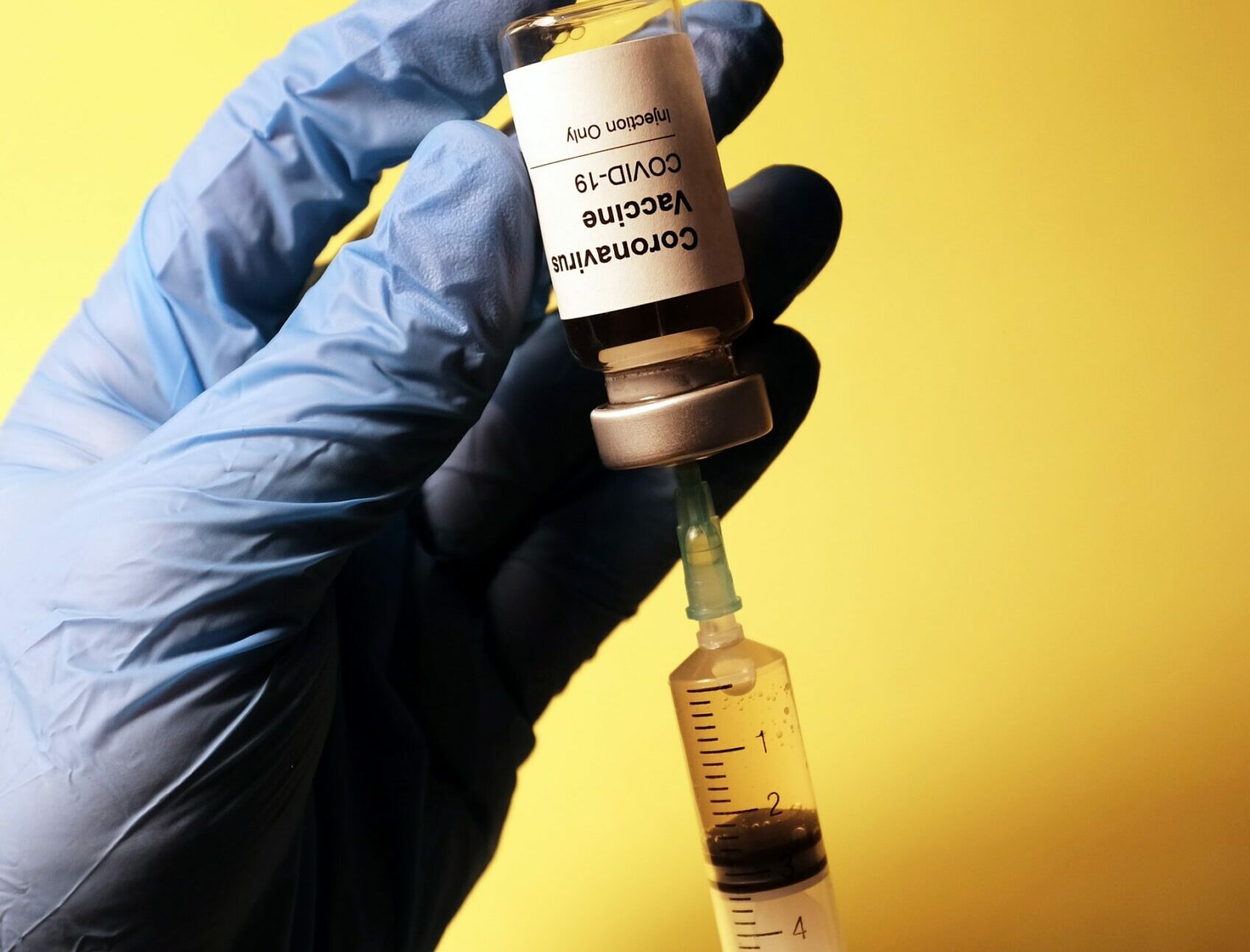
Aifa slows down on the fourth dose of the anti-Covid vaccine. Here's how and why
With the rise of cases, the Ministry of Health asked the Italian Medicines Agency (Aifa) for an opinion on the administration of the fourth dose for those over 70.
And Aifa decided: "Further investigations are needed, integrating international scientific evidence with data from studies underway in Italy".
Here are all the details.
WHAT AIFA HAS DECIDED ABOUT THE SECOND BOOSTER
“The Technical Scientific Commission (Cts) of Aifa started on 24 March 2022 the evaluation of the opportunity of a second booster dose of vaccines against Covid-19 for particular categories of subjects. Considering the complex of data available, the CTS has decided that further investigations are necessary, integrating the international scientific evidence with the data of studies underway in Italy ”, writes the Italian Medicines Agency in a note. "The CTS reiterated that the completion of the vaccination cycle followed by the already authorized booster dose is essential".
THE DOUBT
In fact, if everyone agrees on the usefulness of the fourth dose for immunocompromised people – a campaign that has already started a few weeks ago – the opinion regarding the elderly in general is not unanimous.
The studies available so far, the experts recall, speak of the increase in antibodies in vaccinated but not of the effective usefulness of a fourth dose in avoiding infection and disease, a reason that causes some hesitations.
THE DIFFERENT OPINIONS OF THE EXPERTS
For example, the infectious disease specialist Matteo Bassetti says against it: “With this vaccine it makes no sense to do the fourth dose, it should be modified for any new variants. If the ministry thinks to push the fourth dose to over 75, know that the scientific community is against it. It is not enough for a person to be elderly to need a fourth dose now, they must be frail due to problems with the immune system. And whoever is in this situation has already been involved in the campaign ”. According to Bassetti, it is more worrying that about 10 million people have not yet taken the third dose.
On the other hand, Walter Ricciardi , advisor to Minister Roberto Speranza, has a completely different opinion, who believes that “with this trend [the fourth dose, ed ] is also necessary for those who are in old age, for residents of facilities for the elderly. Due to illness and age, it is necessary to move in time and the time is now ”. Just like it is happening in Israel and the UK .
THE DATA AVAILABLE ON THE FOURTH DOSE
The weekly monitoring of the Gimbe Foundation cites in this regard the results of a study published in the New England Journal of Medicine , which do not support the administration of a fourth dose in young and healthy subjects due to a low efficacy against infections. symptomatic.
For the population over 60, on the other hand, pre-print data are available from an Israeli study which states that the protective effect of the fourth dose seems to occur mainly in older people, especially over 80, while it appears modest in the 70 range. -79 years and small in that 60-69.
HOW MANY FOUR DOSES WERE ADMINISTERED
The Gimbe report also reports that as of March 23, 47,794 fourth doses have been administered. According to the official audience (n.791.376), updated on 9 March, the national coverage rate for the fourth doses is 6% with clear regional differences: from 0.5% in Calabria to 30.4% in Piedmont.
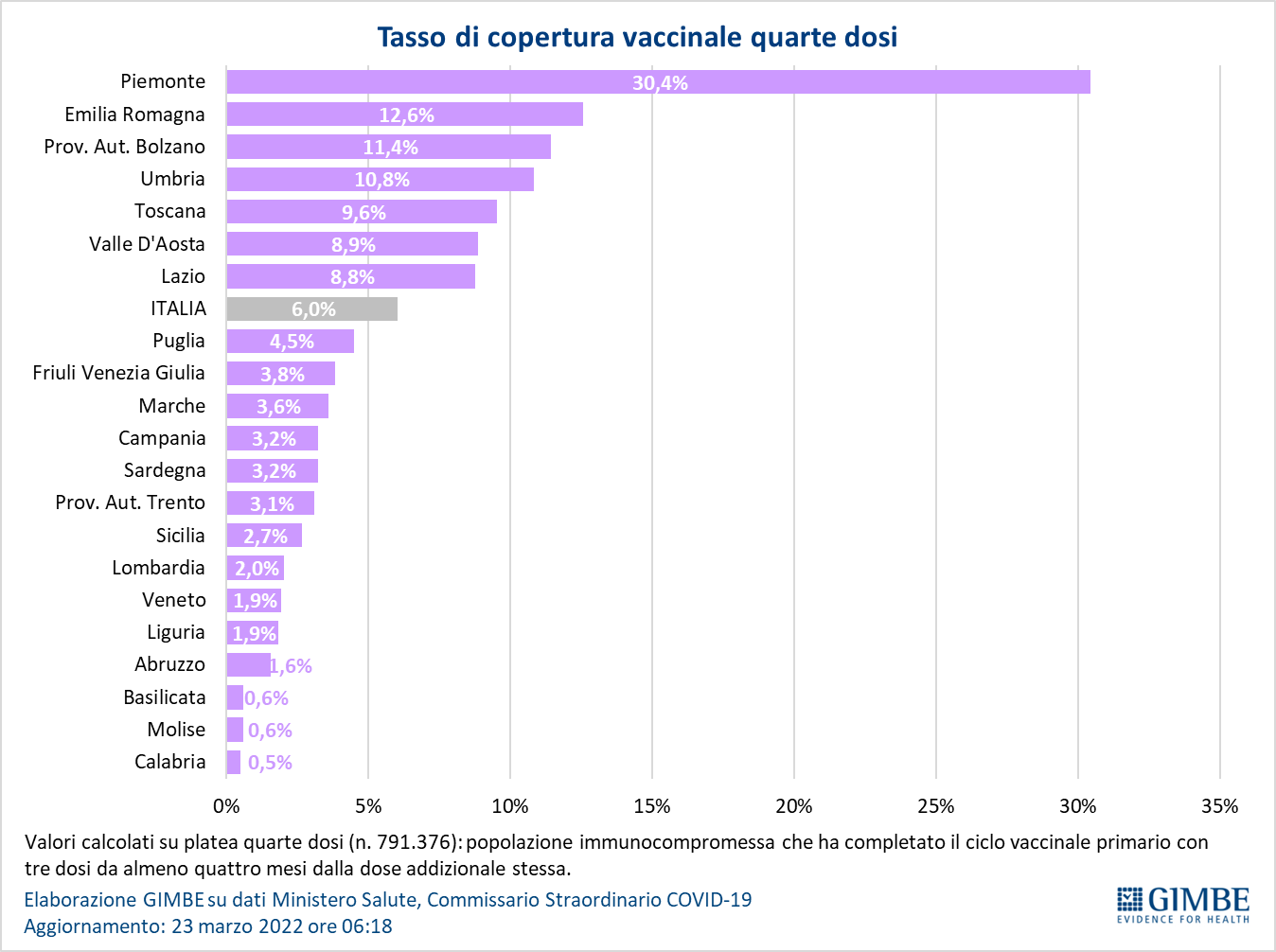
HOW MUCH THE VACCINAL CAMPAIGN GOES
As of 23 March, according to the Gimbe report, 85.6% of the population (n.50,702,432) had received at least one dose of vaccine (+17,006 compared to the previous week) and 83.9% (n. 49,688,458) completed the vaccination cycle (+60,028 compared to the previous week).
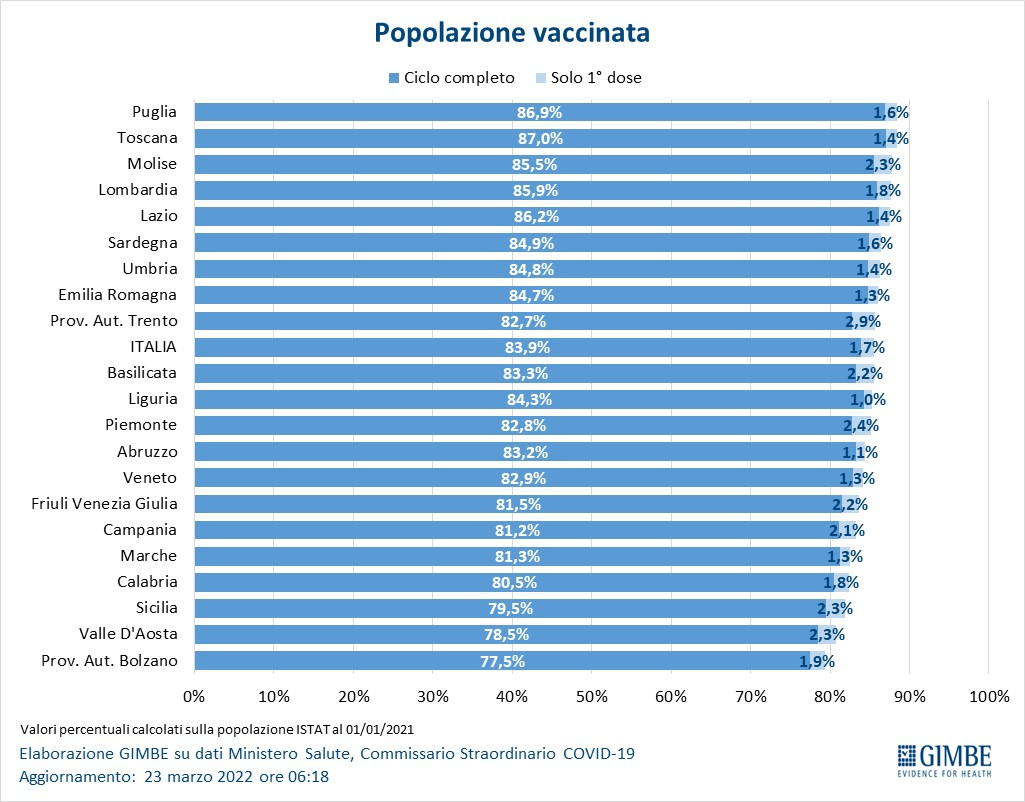
The number of administrations (n. 352,744) decreased further in the last week, with a 7-day moving average of 50,392 administrations / day: the third doses (n. 269,988) and by 23.4 were reduced by 16.3% % new vaccinated people (18,296).
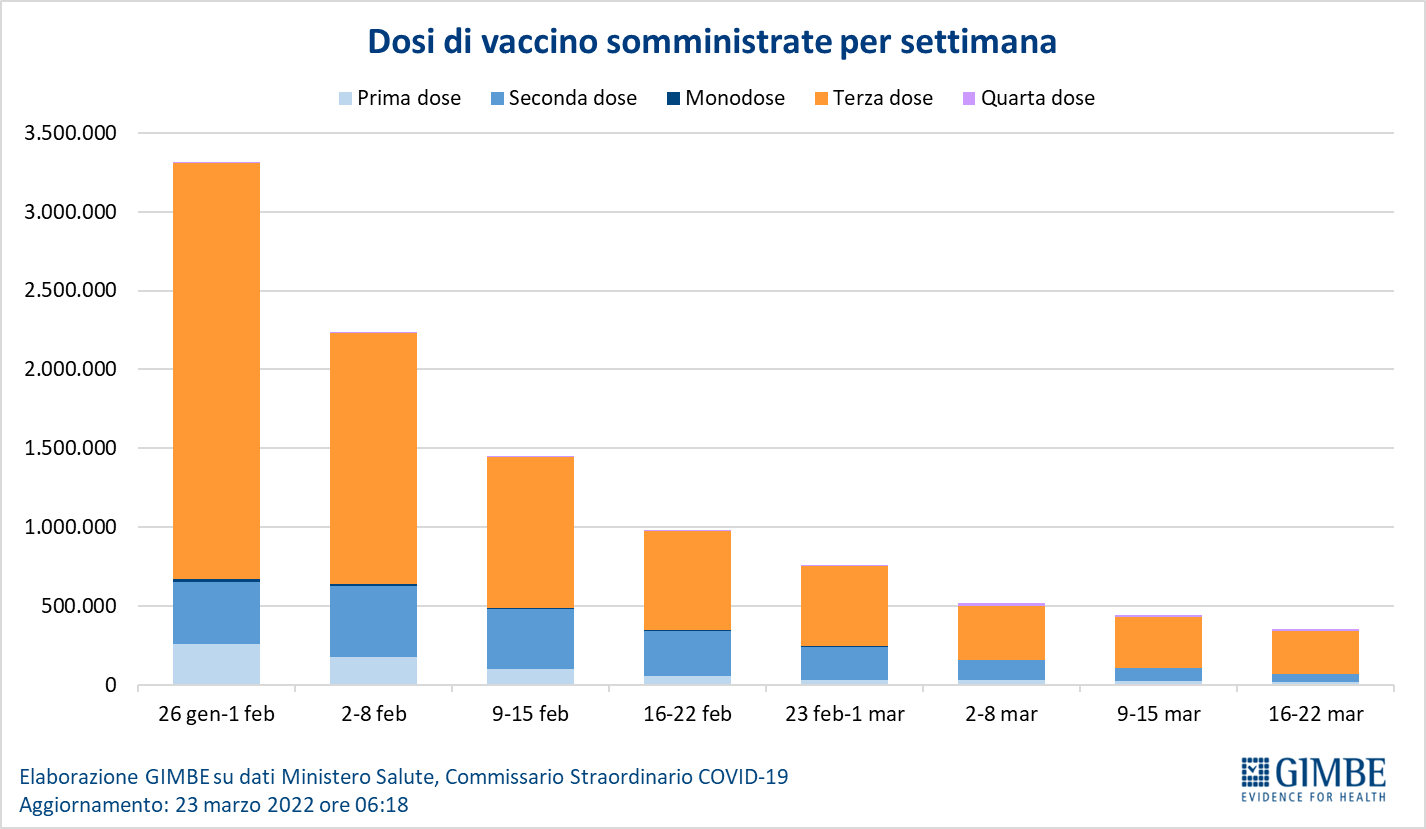
"All the data show that the vaccination campaign is now in a stalemate – underlined Nino Cartabellotta, president of the Gimbe Foundation – despite the fact that there are currently over 4.5 million people vaccinated with the first dose and 2.5 million with the booster dose. ".
“The vaccination coverage rates, in fact, in the last month have registered very small increases. The covers with at least one dose – he explained – mark a measly +0.2 going from 85.4% to 85.6%; those with a complete cycle increased by only one percentage point, going from 82.9% to 83.9%). The coverage of third and fourth doses also proceeds slowly with, respectively, increases of 3.5 and 6 percentage points (respectively 80.5% vs 84% and 0% vs 6%) despite the later start and the considerable vaccinable audience ".

NEW VACCINATES FALL (AGAIN)
In the week of March 16-22, according to Gimbe data, there is a further decline in new vaccinates: 18,296 compared to the 23,895 of the previous week (-23.4%). Of these, 21.4% is represented by the 5-11 range: 3,907, with a decrease of 16.6% compared to the previous week.
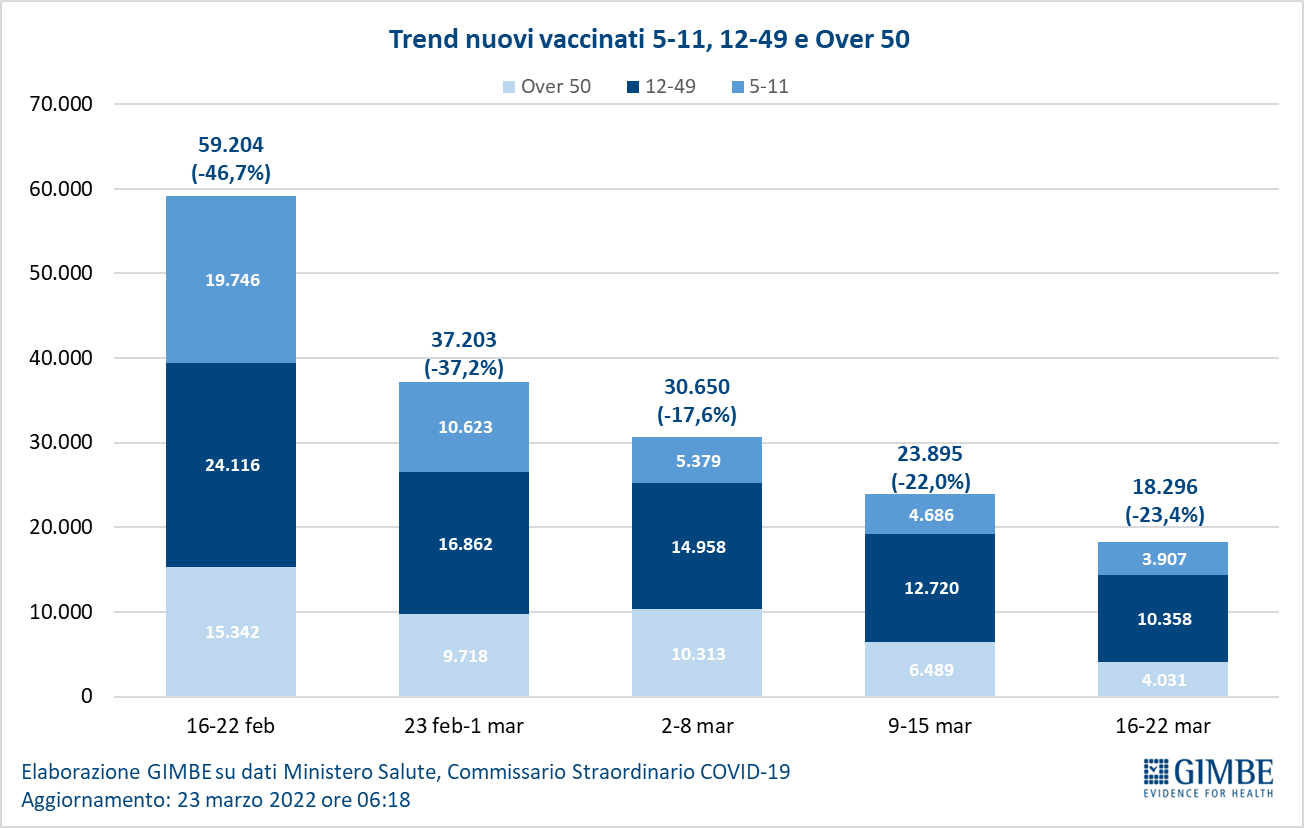
Despite the compulsory vaccination and the obligation to have a reinforced green pass in the workplace, among the over 50s the number of new vaccinated people drops again, reaching 4,031 (-37.9% compared to the previous week).
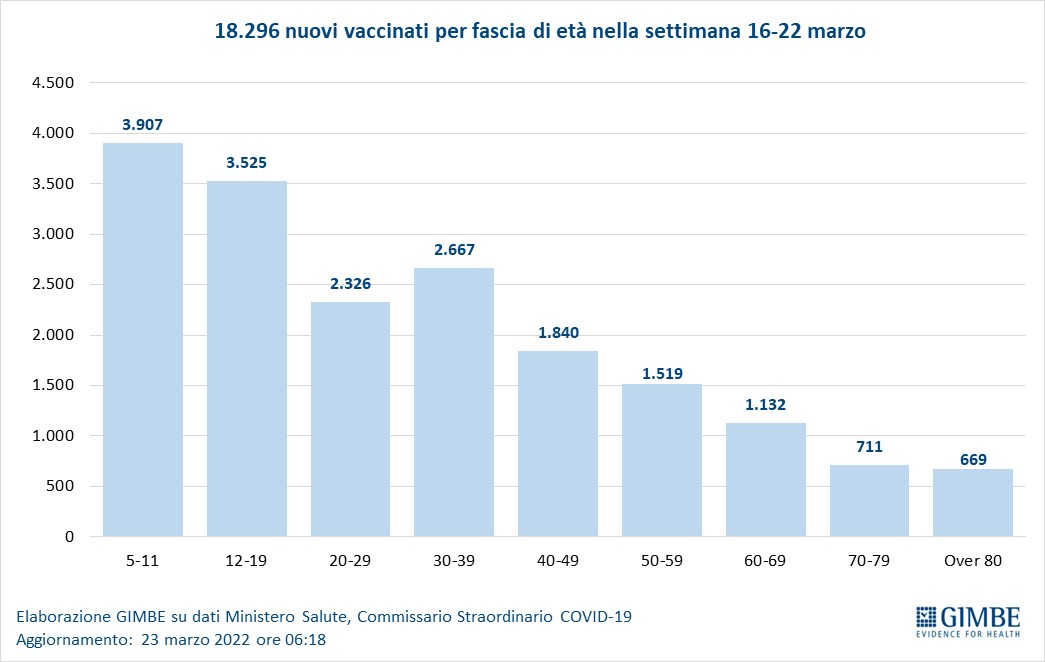
FOCUS CHILDREN
As of March 23, the report specifies, 2,417,151 doses were administered in the 5-11 year range: 1,370,966 children received at least 1 dose of vaccine (of which 1,225,734 completed the vaccination cycle), with a rate of national coverage which stands at 37.3% with clear regional differences (from 20.2% in the Autonomous Province of Bolzano to 53.7% in Puglia).
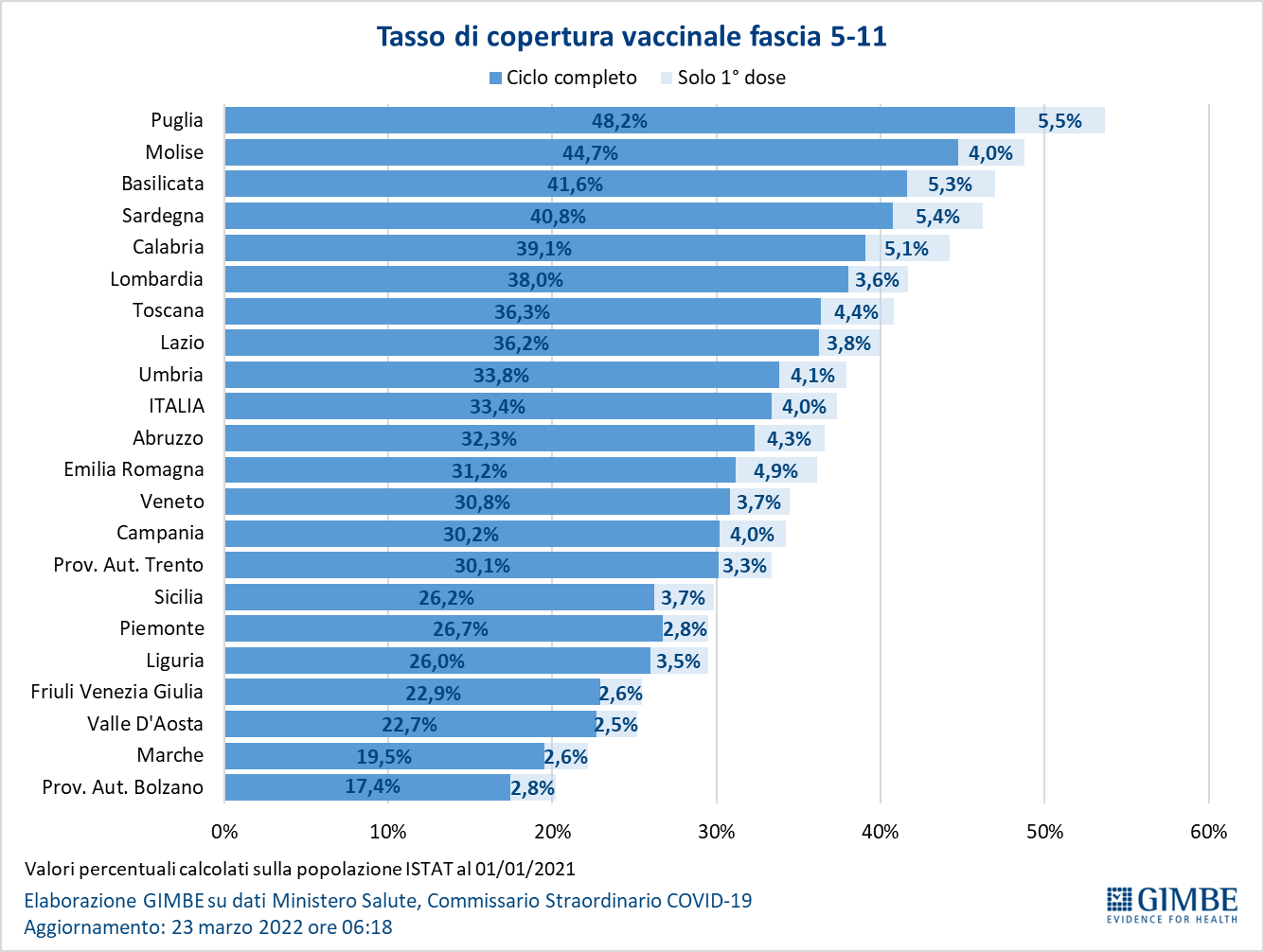
HOW DO THE THIRD DOSES GO
As of March 23, Gimbe reports, 38,540,037 third doses have been administered with a 7-day moving average of 38,570 doses per day. According to the official audience (n. 45.878.964), updated as of March 18, the national coverage rate for third doses is 84% with clear regional differences: from 78.7% in Sicily to 87.9% of the Aosta Valley.
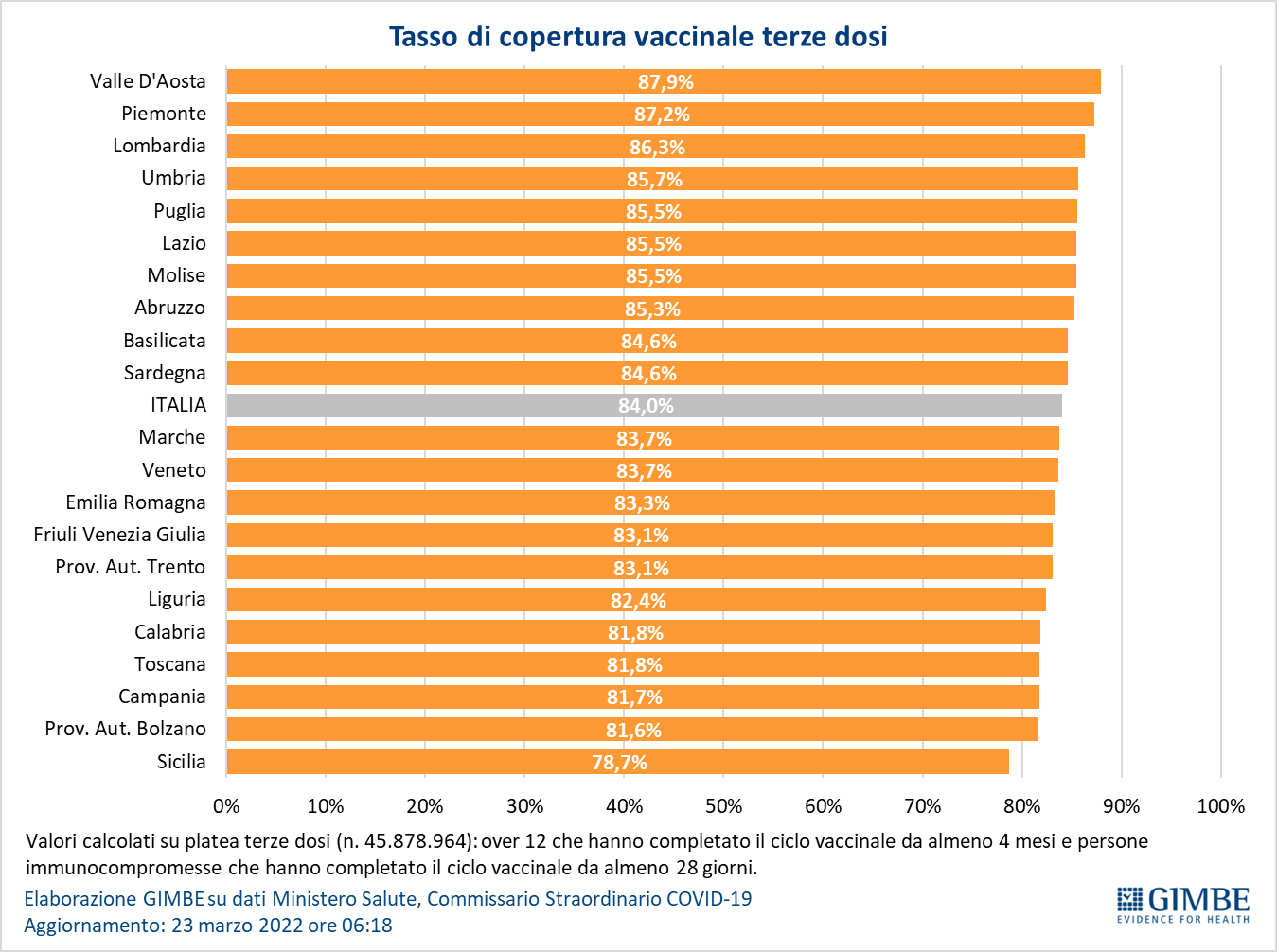
Of the 7,338,927 people who have not yet received the booster dose, 2.53 million could receive it right away, while the more than 4.8 million recovered for less than 120 days are not candidates for it immediately.
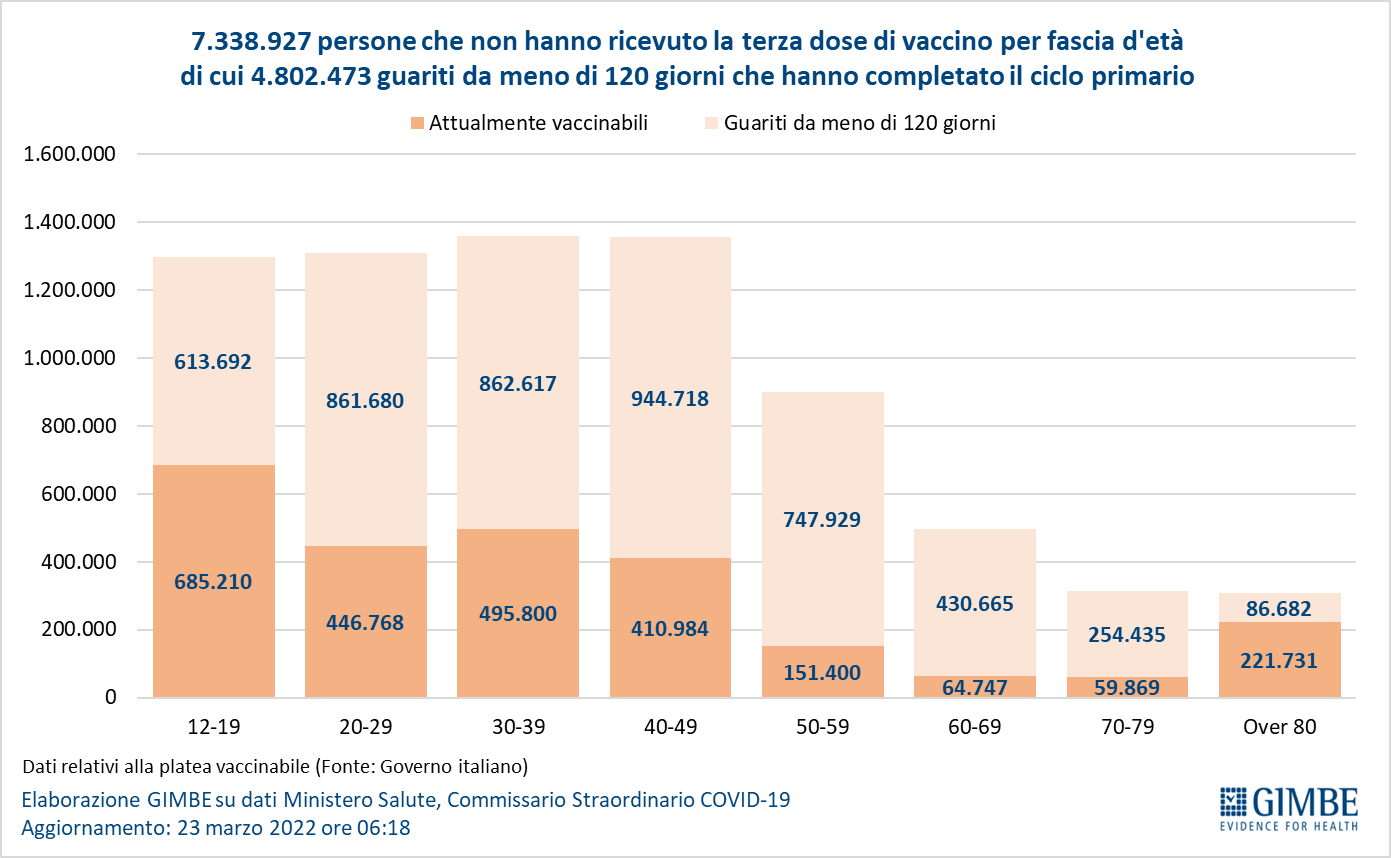
HOW MANY ARE NON-VACCINATED
As of March 23, the report reads, there are still 6.96 million people who have not received even a dose of the vaccine, of which 2.45 million are temporarily protected as they have recovered from COVID-19 for less than 180 days. As a result, there are approximately 4.51 million people currently vaccinated, a figure that does not take into account the exemptions of which the exact number is not known.
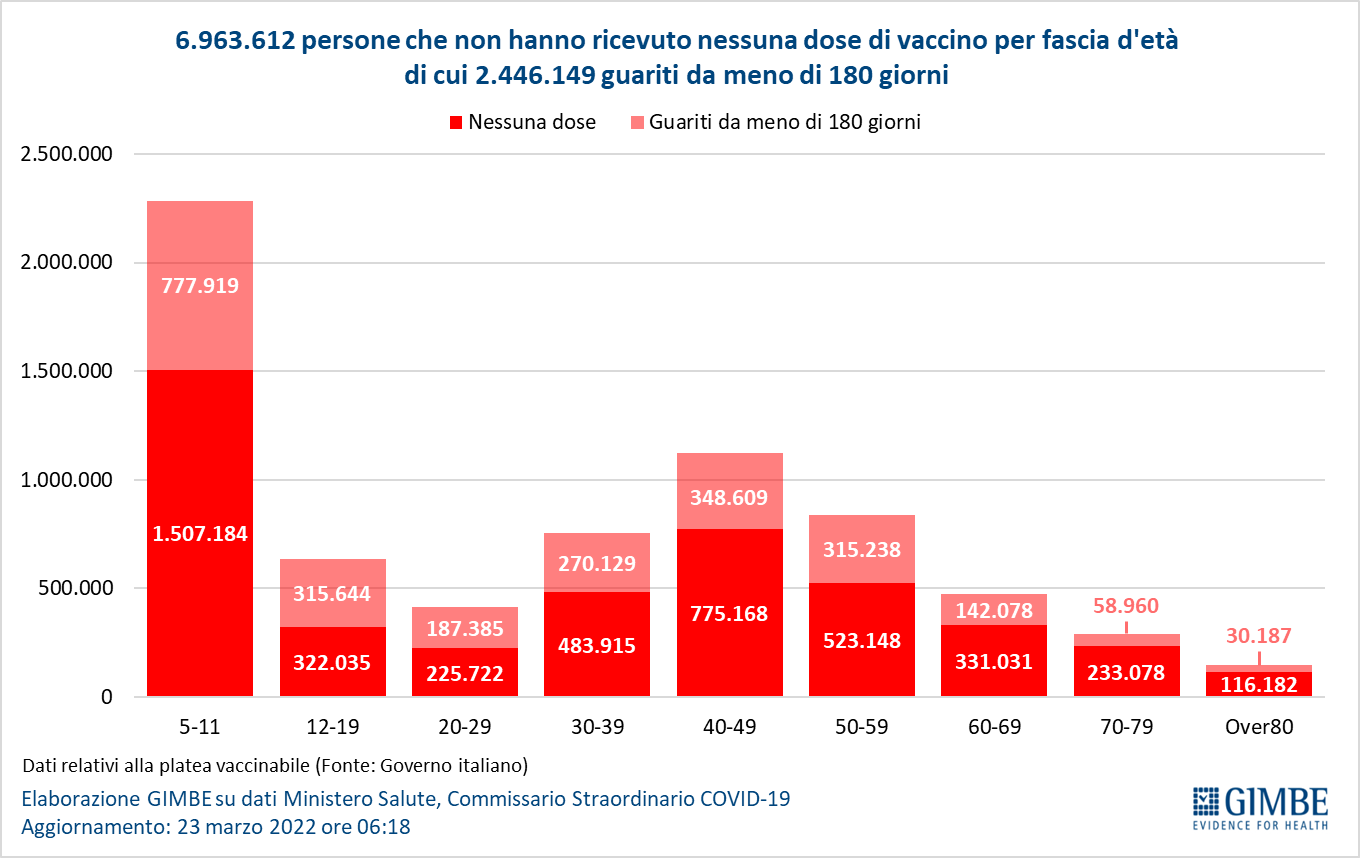
BECAUSE IT IS STILL IMPORTANT TO GET VACCINATED
As Gimbe reports, in people vaccinated with a complete cycle (plus any booster dose), compared to those not vaccinated, the incidence of diagnoses is reduced in the various age groups (by 51.1-73.2%), but especially serious illness (62.1-88.3% for ordinary hospitalizations; 76.6-91.6% for intensive care) and death (67.7-91%).
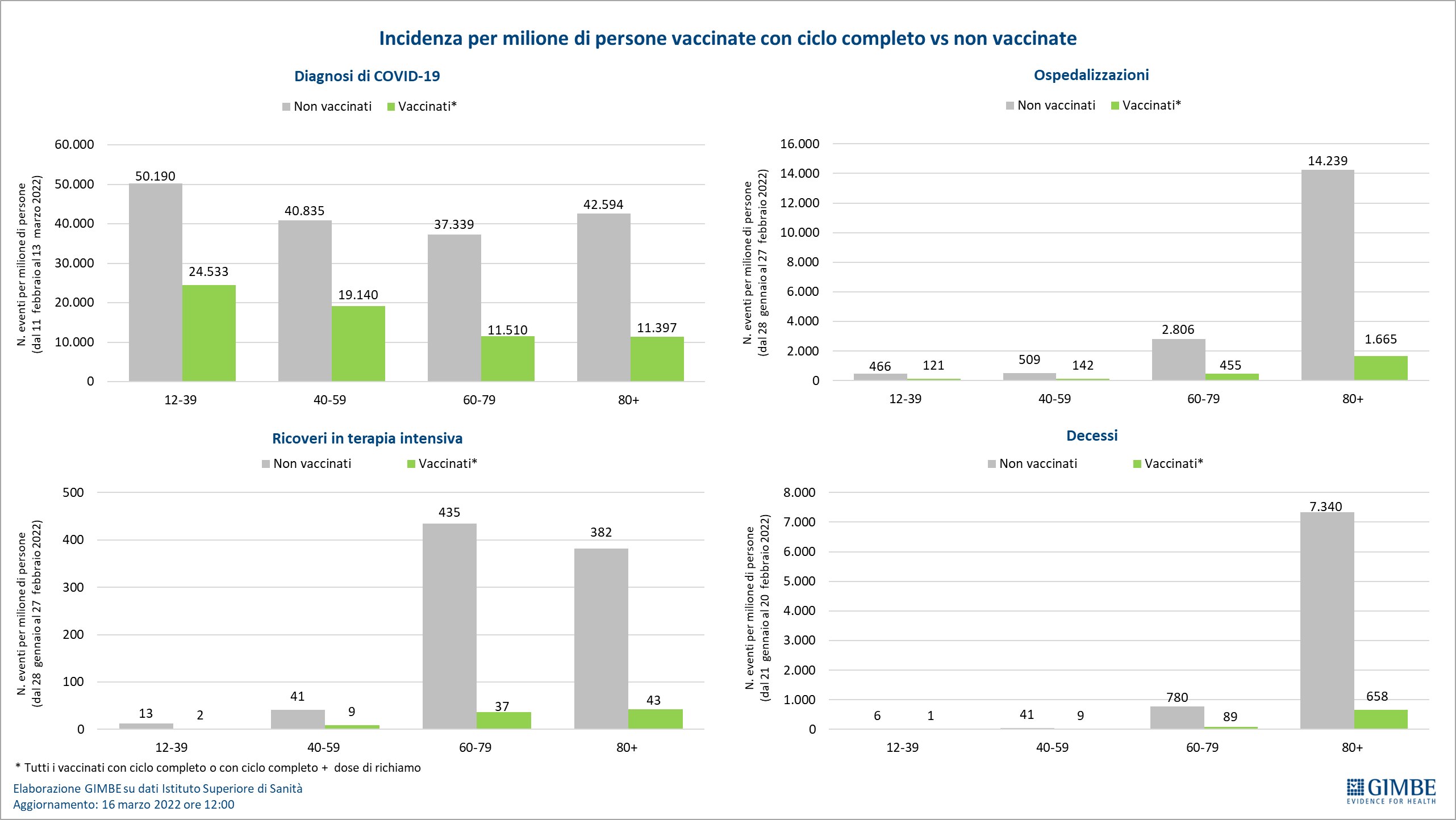
WHY IT IS IMPORTANT TO COMPLETE THE VACCINAL CYCLE
The data of the Istituto Superiore di Sanità, relating only to the period of prevalence of the Omicron variant (starting from January 3, 2022), demonstrate the reduction in vaccination efficacy starting from 3 months from the completion of the primary cycle and its recovery after the administration of the booster.
In particular: the efficacy on diagnosis decreases progressively from 52% for vaccinated with two doses within 90 days to 47.8% for vaccinated for more than 120 days, to then rise again to 72% after the booster; and the efficacy on severe disease progressively drops from 73.3% for those vaccinated with two doses within 90 days to 76% for those vaccinated for more than 120 days, and then rises to 91.5% after the booster.
"The data – explained Cartabellotta – indicate that we are in a phase of clear recovery of viral circulation, albeit heterogeneous in the various areas of the country: over 1.2 million people currently positive, an average of almost 72 thousand new cases per day and a positivity rate that reached 15.2%. The increase in infections is reflected in the increase in hospitalizations in the medical area and slows the decline of intensive care and deaths. To prevent the rise in cases from giving way to a fifth wave whose impact on hospital services could compromise the roadmap envisaged by the reopening decree, it is essential to give a new boost to the vaccination campaign that has now stalled for some time: to increase vaccination coverage and third doses. , in particular in the over 50s, and accelerate with the fourth doses in the immunosuppressed. And obviously pay the utmost attention to individual behaviors, in particular by continuing to use masks indoors ".
HOW MUCH THE NEW CASES ARE GROWING
"For the second consecutive week – declared the president of Gimbe – the new weekly cases are on the rise, rising to around 500 thousand, with an increase of 32.4% and a 7-day moving average that goes from about 54 thousand cases on March 15 to almost 72 thousand on March 22 (+ 24.4%) ".
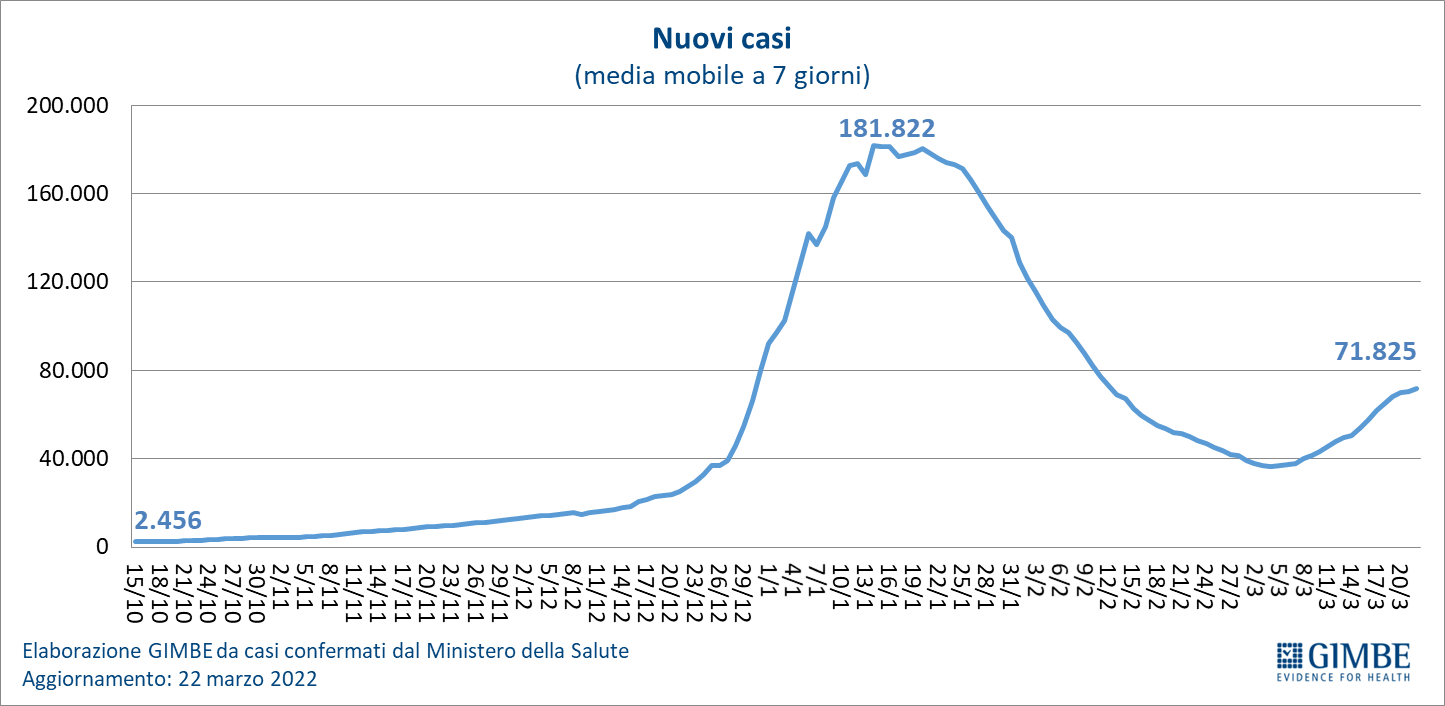
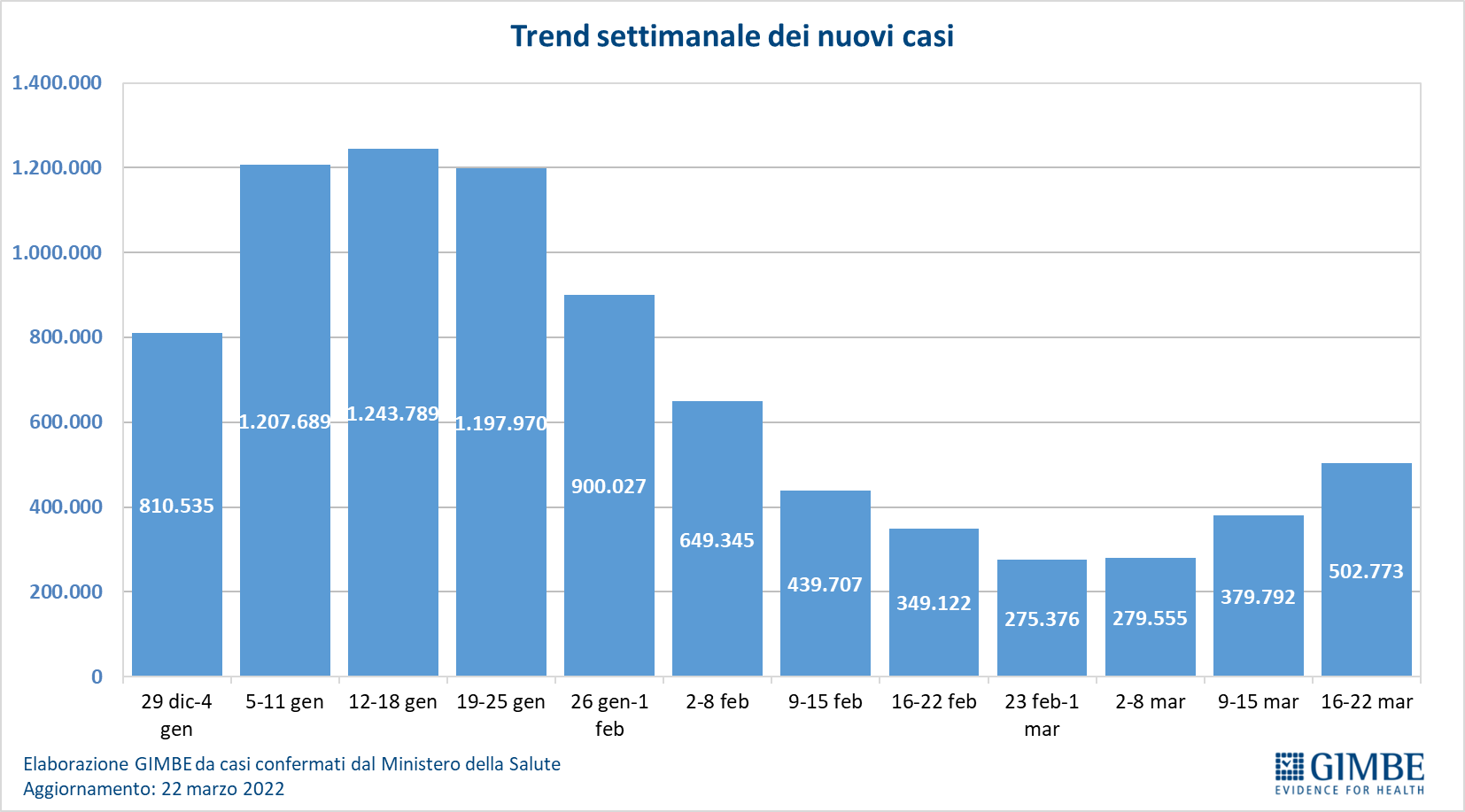
In the week of March 16-22, the Foundation notes a percentage increase in new cases in all Regions: from 51.6% in Puglia to + 17.1% in Umbria. The Autonomous Province of Bolzano is an exception, essentially stable (-0.6%).
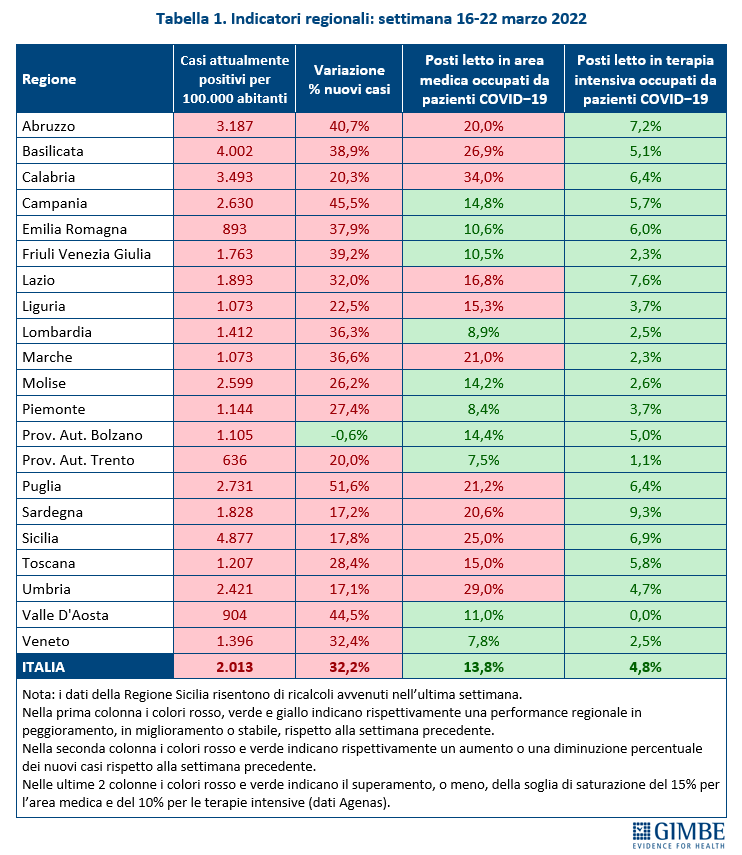
The most significant increase compared to the previous week is recorded in the Southern Regions (+ 42.2%), while the smallest one concerns the islands (+ 17.7%). In the regions of the north-west, north-east and center the values are around 30%: respectively + 33.3%, + 31.9% and + 29.7%.

FEWER CASES IN INTENSIVE CARE BUT …
"On the hospital front – said Renata Gili, Head of Research on Health Services of the Gimbe Foundation – there is a further reduction in the number of beds occupied by COVID patients in intensive care (-9.4%), while the increase in new cases led to a reversal of the trend in hospitalizations in the medical area (+ 5.9%) ».
In particular, in the critical area from the peak of 1,717 on January 17, hospitalizations fell to 455 on March 22; in the medical area, on the other hand, after hitting a low of 8,234 on 12 March, they rose to 8,969 on 22 March (figure 7).
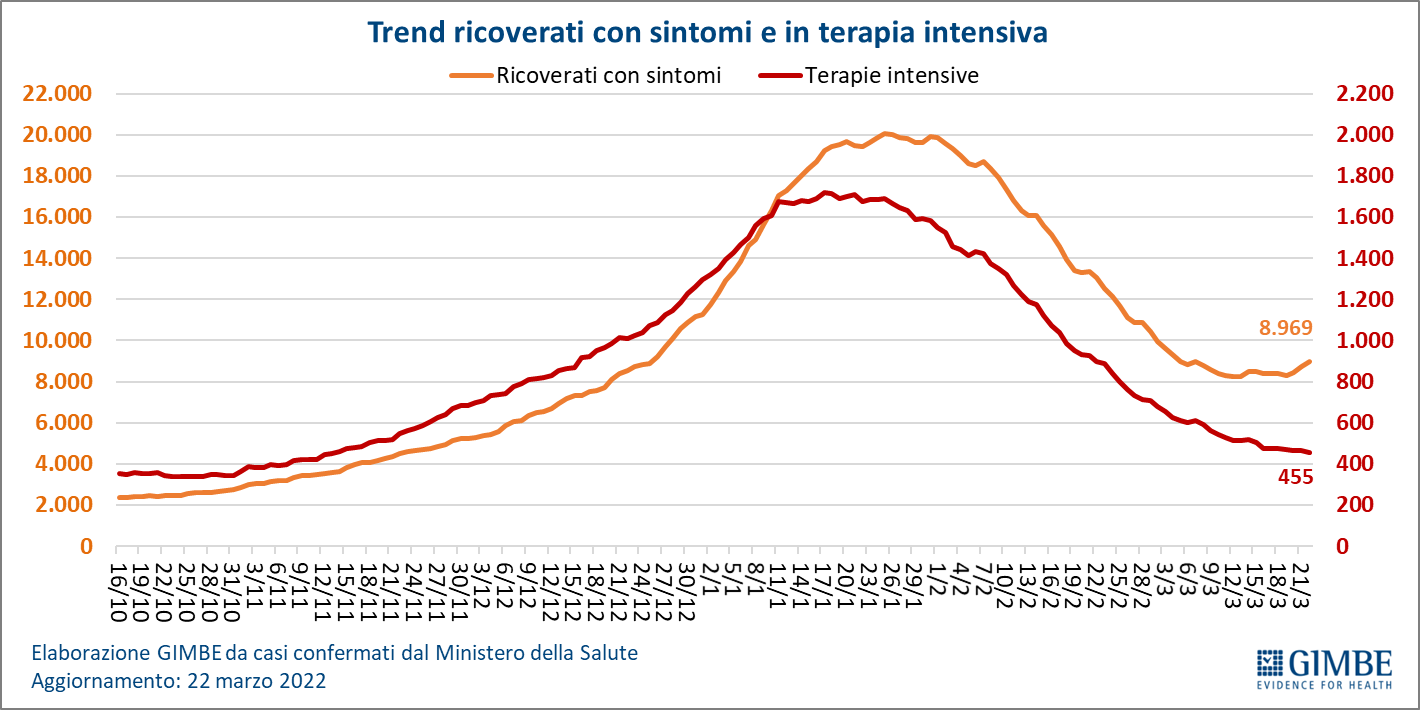
As of March 22, the national employment rate for COVID patients was 13.8% in the medical area and 4.8% in the critical area. Abruzzo, Basilicata, Calabria, Puglia, Sardinia, Sicily and Umbria exceed the 15% threshold in the medical area, with the Calabria Region reaching 34%; no Region goes beyond the 10% threshold in intensive care.
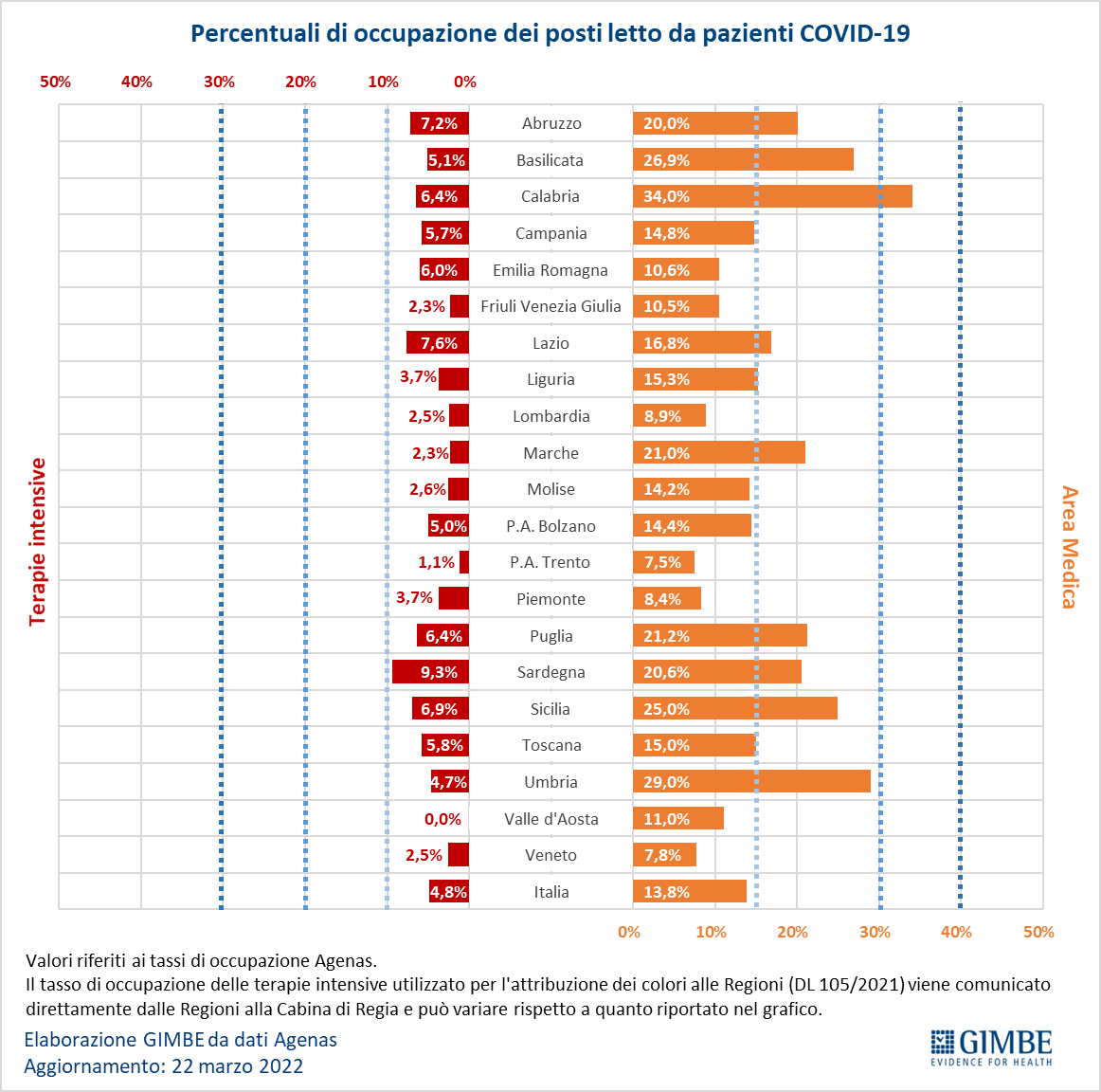
“The number of daily admissions to intensive care is stable compared to last week – points out Marco Mosti, Operations Director of the Gimbe Foundation: the 7-day moving average in fact stands at 42 admissions / day compared to 41 the previous week".
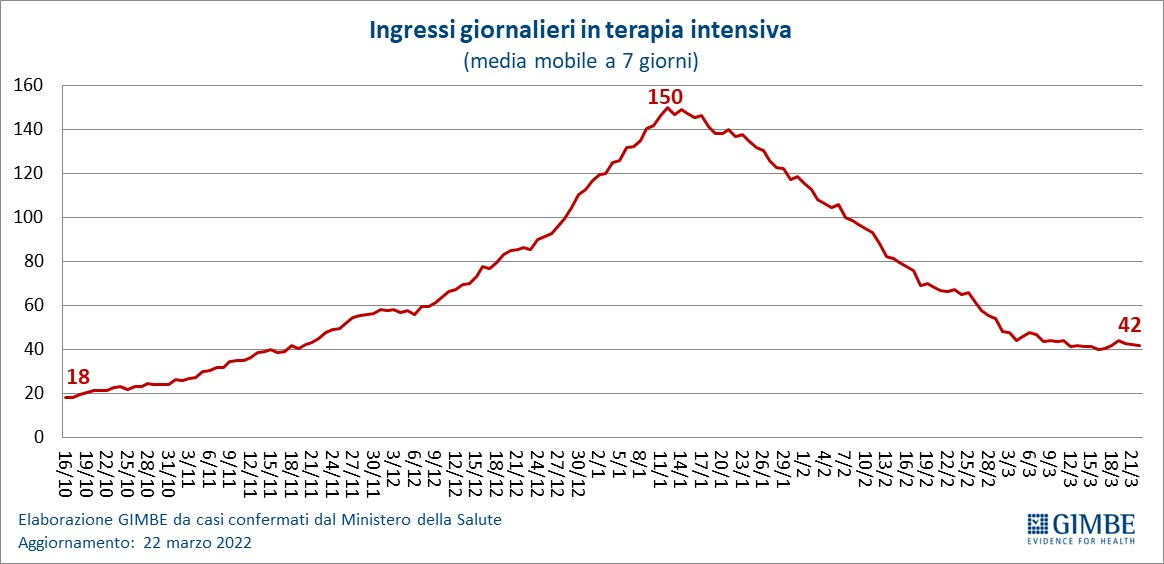
Deaths are still decreasing, albeit to a lesser extent than in previous weeks: 924 in the last 7 days (of which 83 referring to previous periods), with an average of 132 per day compared to 139 in the previous week.
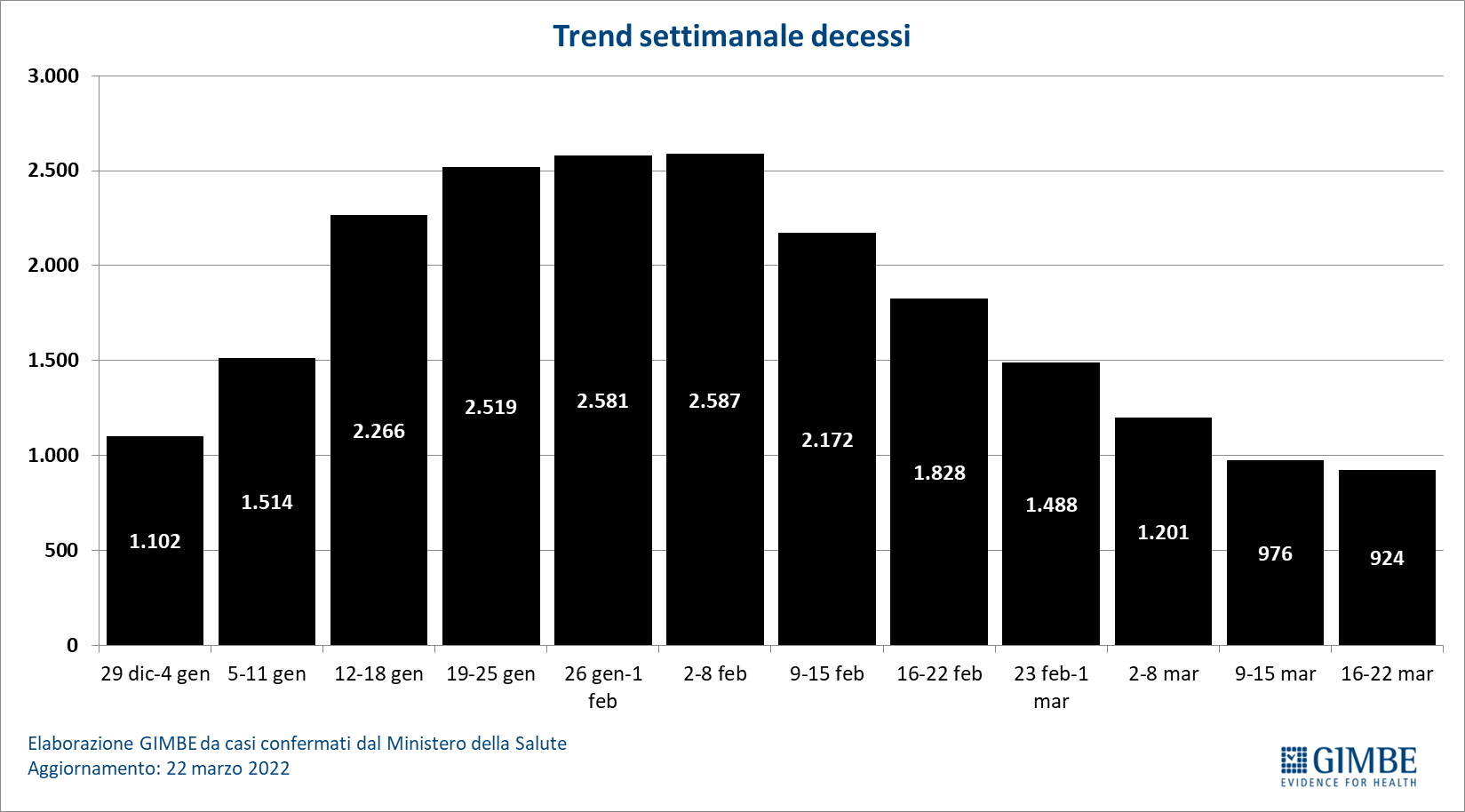
This is a machine translation from Italian language of a post published on Start Magazine at the URL https://www.startmag.it/sanita/cosa-decidera-aifa-sulla-quarta-dose/ on Thu, 24 Mar 2022 14:53:12 +0000.
